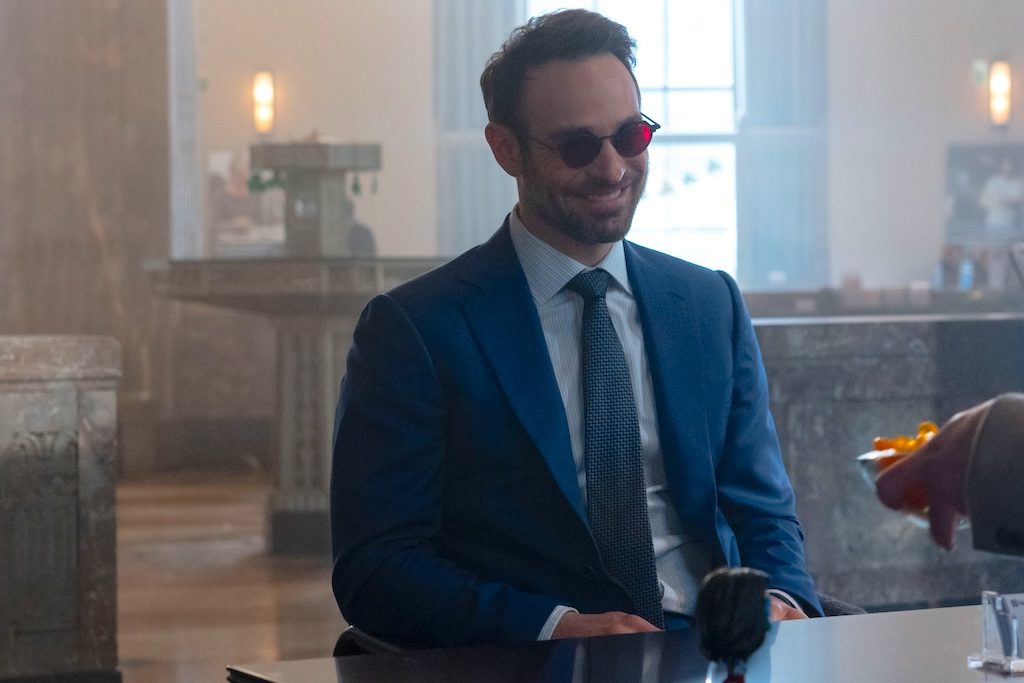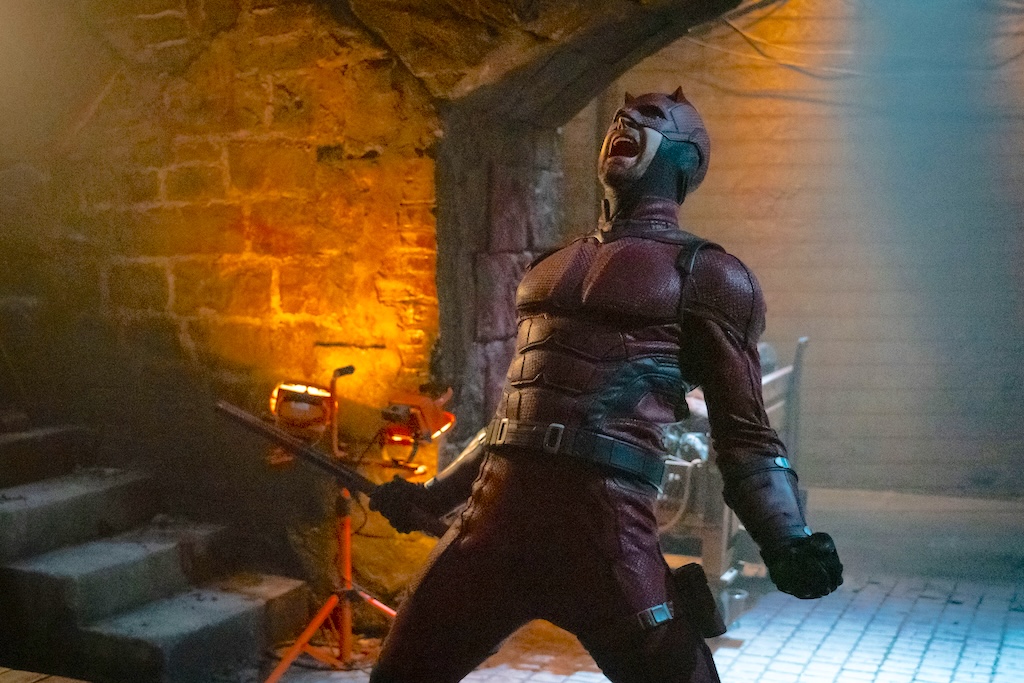For three successful seasons, from 2015 – 2018, blind lawyer with elevated senses, Matt Murdock (Charlie Cox) fought crime in New York City until he hung up his Daredevil costume for good to become a regular lawyer. His vigilante days are well and truly behind him. That is, until his long-time nemesis Wilson Fisk (Vincent D’Onofrio) has succeeded in his run for governor, and also to become part of the “regular” folk. Murdock will honor his retirement pledge so long as Fisk promises to behave himself.
Matt Murdock is focussing on his legal career and established relationship with therapist Heather Glenn (Margarita Levieva). He’s done with being Daredevil. Too many lies. Too much interloping. Too much blood and violence. And Fisk is done being Kingpin. He’s determined to prove to himself that he can become successful within the confines of the law. It’s an uneasy disruption in their masculinity. After all, can a wild animal live in a zoo?
“‘I’m Matt Murdock. I’m just a lawyer—I’m not Daredevil anymore.’ ‘I’m Wilson Fisk, mayor of New York City; I’m doing good things for people,'” the pair repeatedly try to convince themselves. But the allure of their true selves is too strong to keep them away from it. So they relapse into their dangerous worlds despite knowing better.
Before too long, Daredevil kicks, punches, and smashes his way out of retirement in a new series titled Daredevil: Born Again set six years after the third series finale. The Murdock Nelson Page Law Firm is officially shuttered and Foggy Nelson (Elden Henson) has been shot dead by Benjamin Poindexter, aka Bullseye, played by Wilson Bethel – all in the first episode to make the schism from Murdock’s old life even more dramatic.

Daredevil/ Matt Murdock (Charlie Cox) Photo by Giovanni Rufino/ Marvel
There’s a nobility and honor in death for the higher cause. The prospect of it is not a deterrent.
Showrunner Dario Scardapane describes Born Again as a “New York crime story”, compared to the noir tone of the original series. It draws inspiration from The Sopranos, King of New York and other crime lords from the era. Executive Producer Brad Winderbaum compared Born Again to Game of Thrones because it features “multiple crime factions in New York City each vying for power in really complex ways.”
A Tale Of Male Archetypes
The male psychic flirtation of Daredevil and Kingpin begins as they come out of respective retirement after six years and crack their knuckles before participating in a round of the Fight Club. The dank basement is swapped for the sprawling canvas of New York City. Both men have as much respect for each other as they have contempt. In the battle of who controls the city, there can only be one victor.
The thing with masculine brutality is that testosterone can only be controlled, but not eliminated. Both men are at war with their true egos as they struggle to fit into mainstream society. Ironically, their masks are worn during broad daylight than in the darkness. Something has to give. They succumb to their darker instincts.
Fisk is no more a law-abiding citizen convincing New Yorkers that he will stamp out corruption in the city than Murdock is a retired superhero. “Could a vampire ever live in daylight?”

Wilson Fisk/ Kingpin (Vincent D’Onofrio) Photo by Giovanni Rufino/ MARVEL
The political pretence is difficult for Fisk – not only the tedious bureaucracy of running government, but the ill-fitting stylish suits he wears to convince the city that he really has turned over a new leaf – all while planning to extend his power and control over the city. This is his oxygen despite him having more than enough air to breathe.
Daredevil considers himself a fraud because he choses to keep his identity a secret. He’s consumed my internal conflict as he decides which version of himself is the real Matt Murdock.
In some regards, his desire to not reveal himself to the citizens is eclipsed by his rescuer personality profile. He saves everyone, but himself. His purpose is self-sacrifice. He’s always been driven by his inability to rescue innocent people as Matt Murdock. “Am I Daredevil or am I Matt Murdock?’ he postulates.
Having two tightly-braided male leads makes it difficult to distinguish who is the hero and who is the villain in Daredevil: Born Again.
Both men carry deep emotional battle scars from personal losses. They despite each other as much as they inextricably need each other. “The tragic flaw in their characters is that they both give in to the darker side of their true nature, and they draw each other into that,” says showrunner Dario Scardapane.
Both men are in deep emotional turmoil – for being true to themselves.
The duo are pitted against each other in a Gladiator-style combat – a battle of minds and fists. They perversely need each other to test each other’s limits. Otherwise, they’re little more than well-fed, pampered lions in a safari park. Existing not living.
Frank Castle (Jon Bernthal) aka the Punisher returns to remind Daredevil what it means to be a crime-fighting vigilante in a Nietzsche-esque portrayal of what happens when you stare into the abyss for too long and begin to normalize the chaos. They started out as enemies in Season 2, but they eventually formed a tenuous alliance to overcome the Fisk beast.
The men find common ground in the series when Muse appears – an MCU graffiti artist who paints disturbing murals across the city. The street art isn’t the most disturbing aspect of Muse. It’s the disappearance and murdering of people who’ve had their blood drained to give the paint its distinct hues.
